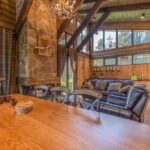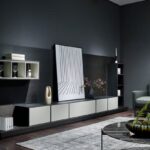When it comes to selling a home, first impressions are crucial. Potential buyers need to be able to envision themselves living in the space, and one way to achieve this is through effective staging and decoration. In this article, we will explore the various aspects of decorating a home for sale, offering valuable tips on how to make your property more appealing to potential buyers.
Understanding the importance of staging is essential when preparing your home for sale. From creating a clean canvas by decluttering and depersonalizing to utilizing strategic decor elements, each step plays a pivotal role in attracting potential buyers and ultimately securing a successful sale. By following these guidelines, you can ensure that your property stands out in the competitive real estate market.
In addition to providing practical advice on decorating techniques, we will also delve into the significance of understanding your target market and how it can impact your decorating choices. By catering to the preferences of potential buyers, you can increase the likelihood of receiving offers that meet your expectations.
Whether you’re considering hiring a professional stager or interior designer or aiming for a DIY approach, this article will equip you with the knowledge needed to effectively decorate your home for sale.
Understanding Your Target Market
When preparing to sell your home, it’s crucial to understand the preferences and expectations of your potential buyers. By tailoring your home’s decor to what buyers are looking for, you can significantly increase its appeal and ultimately its saleability.
Demographic Considerations
One of the first steps in understanding your target market is to consider the demographics of the potential buyers. Are they young professionals, families, empty nesters, or retirees? Each demographic group has different priorities and needs when it comes to a home’s decor. For example, young professionals may be looking for a modern and stylish space, while families may prioritize practicality and durability. Understanding these differences will help guide your decorating choices.
Market Trends and Preferences
Researching current market trends and buyer preferences in your area is essential for creating a decor that will resonate with potential buyers. Look at recent home sales and take note of the features and decor that were most appealing to buyers. This can give you valuable insights into what is currently in demand and help you make informed decisions when staging your own home.
Emphasizing Key Selling Points
Consider the unique selling points of your home, such as its location, architectural features, or layout. Tailoring your decor to highlight these key elements can help create a strong emotional connection with potential buyers. For example, if your home has beautiful natural light, showcase it by choosing window treatments that allow sunlight to flood the space. If there are architectural details like exposed brick or hardwood floors, make sure they are showcased rather than hidden behind clutter or furniture.
By understanding your target market and their specific needs and preferences, you can decorate your home in a way that resonates with potential buyers, maximizing its appeal and ultimately increasing its saleability.
Decluttering and Depersonalizing
When preparing your home for sale, decluttering and depersonalizing are crucial steps in creating a clean canvas that will appeal to potential buyers. Decluttering involves removing any unnecessary items, such as extra furniture, decor, or personal belongings, to give the space a more open and spacious feel. By doing so, you allow potential buyers to envision themselves living in the space without being distracted by clutter.
Depersonalizing goes hand in hand with decluttering and involves removing personal items such as family photos, memorabilia, and unique decor that may not be to everyone’s taste. Creating a neutral and blank canvas allows potential buyers to imagine their own belongings in the space. It also helps make the home more appealing to a wider audience.
In addition to creating a clean canvas through decluttering and depersonalizing, it’s important to ensure that the space is thoroughly cleaned and organized. This includes deep cleaning all surfaces, tidying up closets and storage areas, and making sure that every room is presentable. This attention to detail can make a significant difference in leaving a positive impression on potential buyers as they tour your home.
| Decluttering and Depersonalizing Tips | Data |
|---|---|
| Remove unnecessary items | Create an open and spacious feel |
| Take down family photos and memorabilia | Appeal to a wider audience |
| Thoroughly clean and organize the space | Leave a positive impression on buyers |
Neutral Color Palette
When it comes to decorating your home for sale, the color palette you choose can make a significant impact on potential buyers. Neutral colors have become increasingly popular in home staging because they create a sense of calm and appeal to a broad range of tastes. This is important when trying to attract as many buyers as possible.
Neutral tones such as whites, beiges, grays, and soft blues are known for their ability to make a space feel more open, airy, and light. These colors also provide potential buyers with a blank canvas, allowing them to envision their own furniture and personal belongings in the space. By using neutral shades on the walls, floors, and large pieces of furniture, you are creating a seamless flow that will appeal to a wide audience.
According to a study by Zillow, homes with soft blue bathrooms (especially periwinkle blue or powder blue) sold for $2,786 more than expected. In addition, homes with cool, neutral tones like dove gray or light cerulean blue in the kitchen were also found to sell faster and for more money than those with bold color choices. This data underscores how the right neutral color palette can significantly impact the sale price and speed of selling your home.
| Neutral Color | Impact on Sale Price |
|---|---|
| Soft Blue Bathrooms | $2,786 higher than expected |
| Cool Neutrals in Kitchen | Sold Faster and For More Money |
Highlighting the Best Features
When preparing your home for sale, it’s crucial to highlight its best features to make a lasting impression on potential buyers. Here are some tips on how to accentuate the positive:
1. **Enhance Natural Light:** Make sure to open curtains and blinds, and remove any heavy drapes or window treatments that may block natural light from entering the space.
2. **Showcase Architectural Details:** If your home has unique architectural elements such as crown molding, exposed beams, or built-in shelves, make sure to highlight these features by keeping them clean and uncluttered.
3. **Emphasize Views:** If your property offers stunning views of the surrounding landscape, be sure to clean windows and remove any obstructions to make these views a focal point in key rooms.
By focusing on these key aspects of your home, you can effectively draw attention to its best qualities and increase its appeal to potential buyers.
Remember, when highlighting the best features of your home, less is often more. Avoid overcrowding spaces with too many decorations or furnishings, as this can detract from the overall appeal of the property. Instead, aim for a clean and uncluttered look that allows buyers to appreciate the unique selling points of your home.
Furniture Arrangement
Utilize Space-Enhancing Techniques
When arranging furniture in a home for sale, it’s important to consider the flow of the space and how to optimize it. One way to create a spacious and inviting layout is by using space-enhancing techniques.
This can include placing furniture at an angle to open up the room, using area rugs to define spaces, and ensuring that there is clear pathways throughout each room. By strategically arranging furniture, you can make the space feel larger and more appealing to potential buyers.
Showcase Functionality and Versatility
Another key aspect of furniture arrangement when decorating your home for sale is showcasing functionality and versatility. Buyers want to see how they can use the space, so it’s important to highlight the purpose of each room. For example, if you have a spare room that serves as both a guest bedroom and an office, be sure to demonstrate this dual functionality through your furniture arrangement. By showcasing versatility, you can help buyers envision themselves living in the space.
Create a Focal Point
In addition to creating a spacious layout and showcasing functionality, it’s important to create a focal point within each room. This could be a fireplace, a large window with a view, or a piece of statement furniture.
By arranging the rest of the furniture around this focal point, you draw attention to key features of the room and create a visually appealing layout. When decorating your home for sale, consider what aspects of each room you want to highlight as selling points and arrange your furniture accordingly.
Adding Strategic Decor
When decorating your home for sale, it’s essential to pay attention to the strategic use of art, mirrors, and accessories. These elements can significantly enhance the overall appeal of your space and make it more attractive to potential buyers. Here are some tips on how to effectively incorporate these decorative items into your home staging efforts:
- Art: Choose art pieces that complement the style of your home. Opt for neutral or abstract artwork that can appeal to a wide range of tastes. Position the artwork at eye level and consider creating a gallery wall to add visual interest to the space.
- Mirrors: Mirrors can make a room appear larger and brighter. Place mirrors strategically to reflect natural light and create the illusion of depth. Consider placing a mirror opposite a window or in a dark corner to maximize its impact.
- Accessories: Carefully select accessories such as throw pillows, rugs, vases, and other decorative items to add texture and personality to your space. Keep it simple and avoid cluttering surfaces with too many accessories.
By paying attention to these details and incorporating strategic decor elements, you can create an inviting and appealing atmosphere that will resonate with potential buyers.
Remember that less is often more when it comes to decorating for selling purposes. Avoid personal photographs or overly unique decor pieces that might not appeal to everyone. It’s important to strike a balance between adding warmth and character while still allowing potential buyers to envision themselves living in the space.
Ultimately, the goal is to create a neutral but inviting environment that will allow prospective buyers to imagine themselves living in the home harmoniously with their own belongings. With careful attention given Art, Mirrors, and Accessories, you can effectively enhance the overall appeal of your home and increase its marketability.
Curb Appeal
When putting a home on the market, it’s important to remember that first impressions matter. A potential buyer’s initial reaction to the exterior of a home can significantly impact their overall impression of the property. This is where the concept of curb appeal comes into play.
Curb appeal refers to the attractiveness of a property as viewed from the street, and it can greatly influence a buyer’s decision to even step foot inside the home. As such, making a great first impression with outdoor decor is crucial when decorating your home for sale.
The key to achieving excellent curb appeal is to ensure that the exterior of your home looks well-maintained and inviting. This can be achieved through simple measures such as keeping the lawn neatly trimmed, cleaning up any debris or clutter in the yard, and adding some tasteful outdoor decor.
Consider adding potted plants or flowers near the entrance, placing a welcoming doormat, or hanging an attractive wreath on the front door. These small touches can go a long way in creating an inviting and pleasant atmosphere for potential buyers.
In addition to decorative elements, it’s also important to address any necessary repairs or maintenance issues on the exterior of the home. This may include fixing any chipped paint, repairing broken fixtures, or power washing dirty surfaces. By taking care of these details and incorporating strategic outdoor decor, you can enhance your home’s curb appeal and make a positive first impression on prospective buyers before they even step inside.
Professional Advice
When it comes to decorating your home for sale, sometimes it can be overwhelming to know where to start. This is where the expertise of a professional stager or interior designer can be invaluable. These professionals have the knowledge and experience to transform your home in a way that will appeal to potential buyers. But when exactly should you consider hiring a stager or interior designer?
If you feel overwhelmed by the task of decorating your home for sale, or if you simply don’t have an eye for design, then it may be time to bring in a professional. A stager or interior designer can provide valuable insight into what changes need to be made in order to make your home more attractive to potential buyers.
Additionally, if your budget allows for it, hiring a professional can ultimately save you time and money in the long run. They have access to resources and contacts that can help get the job done efficiently and effectively. Plus, their expertise in creating a space that appeals to a wide audience can potentially lead to a quicker sale at a higher price point.
Overall, the decision of whether or not to hire a stager or interior designer ultimately depends on your personal comfort level with decorating and your budget. However, in many cases, enlisting the help of a professional can greatly benefit the selling process and ensure that your home stands out among the competition.
DIY Tips and Tricks
In conclusion, when it comes to decorating your home for sale, there are several important factors to consider. Understanding the importance of staging and creating a clean, neutral canvas can greatly increase the appeal of your home to potential buyers.
Highlighting the best features of your home and using strategic decor such as art, mirrors, and accessories can enhance the overall look and feel of the space. Additionally, paying attention to curb appeal and making a great first impression with outdoor decor is essential in attracting potential buyers.
It’s also important to consider seeking professional advice when necessary. Hiring a stager or interior designer can provide valuable expertise in making your home visually appealing and marketable. However, for those on a budget, there are plenty of DIY tips and tricks that can achieve similar results. From simple rearranging of furniture to adding inexpensive decorative elements, there are many budget-friendly ideas for decorating your home for sale without breaking the bank.
Ultimately, by taking these factors into account and putting effort into decorating your home for sale, you can significantly increase its attractiveness to potential buyers. Whether you choose to do it yourself or seek professional help, creating an inviting and aesthetically pleasing space can make all the difference in successfully selling your home. With the right approach to decorating and staging, you’ll be one step closer to achieving a successful sale at the price you desire.
Frequently Asked Questions
How Can I Make My House Look Good for Sale?
Making your house look good for sale involves decluttering, depersonalizing, and deep cleaning the space. Remove any excess furniture, personal items, and knick-knacks to create a clean and spacious feel. Consider a fresh coat of paint in neutral colors and make any necessary repairs or updates to enhance the overall appearance of the property.
How to Decorate When Selling Your Home?
When selling your home, it’s important to decorate in a way that appeals to potential buyers. Stick to neutral colors and minimal decor to create a clean and inviting atmosphere. Consider adding some fresh flowers or greenery to bring life into the space without overwhelming it with personal style.
How to Furnish a House to Sell?
Furnishing a house to sell involves creating an environment that is inviting and showcases the potential of each room. Choose furniture that fits the scale of the space and arrange it in a way that highlights the flow and functionality of each room.
Avoid overly personalized decor or heavy, dark furniture that can make rooms feel smaller than they are. The goal is to create an attractive, comfortable setting that allows potential buyers to envision themselves living in the home.

I’m thrilled to be your companion on this exciting journey through the world of home decor and design. With a passion for turning houses into homes and a keen eye for the finer details, I’m here to help you transform your living spaces into beautiful, functional, and meaningful havens.





